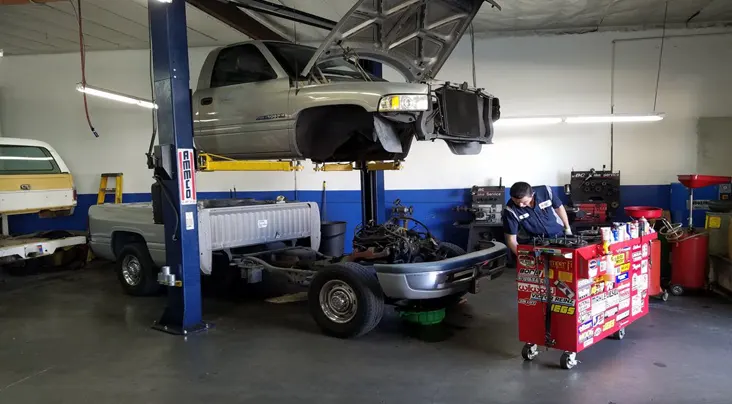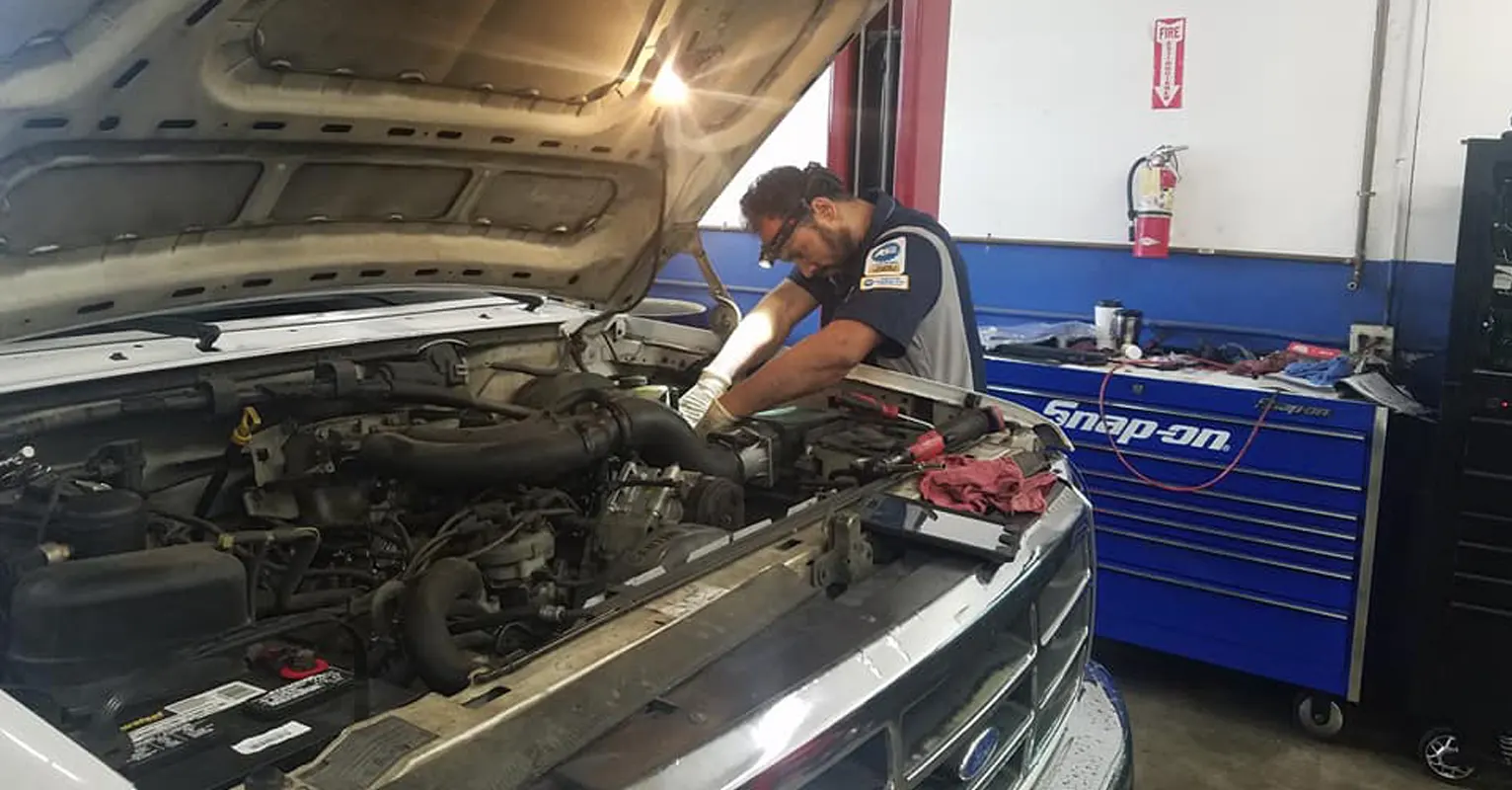
Archive for September 2025If You Drive Like a Maniac (Aggressive Driving is Bad for a Vehicle)Posted September 28, 2025 3:57 AMWhen someone mentions driving like a maniac, they're not talking about you, surely? Besides the safety issues of aggressive driving, you should know that your vehicle will last a lot longer if you'll just mellow out a little. Here are four traits good drivers follow if they want their vehicles to go the extra distance. Cool—The driver who can't wait to get to the next stoplight is just shortening the life of his or her vehicle. Jackrabbit starts and uneven acceleration hurts your engine because the valves and cylinder heads are stressed more. All of those moving parts will wear out faster as well as other components that are connected. That means things like the air conditioner, power steering pump… just about anything that attaches by a belt or a pulley. Oh, and you'll be generating more heat. Heat is one of a vehicle's worst enemies. Warm—If you get in your cold vehicle which has been sitting overnight, start it up and rev the engine high, you've just put a lot of stress on your engine. That's because you didn't let the oil (that's been sitting down in the oil pan at the bottom of the engine) get to the moving parts in order to lubricate them. Some manufacturers advise that you run your vehicle for about 30 seconds before you take off. And if it's really cold out, you may be wise to let the engine run for a minute or two before putting a load on the engine. Also, for the first 5-15 minutes, keep your RPMs on the low side and don't jam on the accelerator. Smooth—You're trying to get somewhere in a hurry and have to jam on the brakes while traveling pretty fast. Just that one time can do more damage to the brakes than you would think. Lots of hard braking can overheat your brakes and damage your rotors, wearing them out way faster than someone who drives with a smoother touch. Hard braking also strains suspension parts, tires and engine mounts. Smart—You know what PRNDL stand for. Those are the letters in your automatic transmission (Park, Reverse, Neutral, Drive, Low). Here are another couple of letters: IQ. A smart shifter never goes into R to D without completely stopping the vehicle, unless, of course, you're anxious to spend some big dollars on your automatic transmission. These days, it's common to get 200,000 miles/320,000 kilometers out of a vehicle, no problem. It just takes regular maintenance (oil changes and regular service) and one other thing. Showing off: showing off a little moderation in driving habits with a big payoff in the end.
Beginning to See the Light (Check Engine Light Diagnostics)Posted September 21, 2025 3:59 AMIt's a light many drivers fear they'll see turn on at the most inopportune time. It's the one on the dash that says "Check Engine," "Service Engine Soon," or it may be simply an engine-shaped light. Your first instinct may be to pull off to the side of the road and turn off the engine. The truth is that Check Engine light can be pointing to problems as simple as a loose gas cap. But it could be as serious as a severely misfiring engine. Don't ignore it because it's there to help you avoid an expensive repair it is designed to alert you to, to tell you something's not quite right. Your vehicle has a connected system of computers and sensors constantly checking to see that all systems are working the way they should. If something isn't, the system will turn on the Check Engine light. If it's flashing, that could be serious. Look at some of the other warning lights or gauges such as heat or oil pressure. They could be telling you your vehicle's problem should be checked right away. In that case, if you can, safely pull off the road and shut the vehicle down. If your vehicle loses power and the Check Engine light is on, try not to push the demands you are making on the engine, such as towing or accelerating hard. Simply put, a flashing Check Engine light should be checked out by a professional as soon as possible. If the Check Engine light is on steadily, manufacturers say it means there's a problem, but it probably doesn't require immediate service. The system is designed to remember the problem it found and store it (as a code) so it can be retrieved later. When you do bring your vehicle in to have us see what's behind the Check Engine light coming on, we’ll hook your vehicle up to a diagnostics tool that can reveal the clues the engine's computers have stored. It takes a trained technician to understand those clues, like a doctor who can interpret a patient's symptoms and come up with the correct diagnosis. Some newer vehicles can even be checked remotely. Once we figure out the problem and repair it, you'll be back on the road again. It's nice to know the Check Engine light is your sentry, standing by to alert you the next time you begin to "see the light." Star Auto Service & AC Go Big or Go Home: Upsize Your Wheels at Star Auto Service & ACPosted September 14, 2025 3:57 AMA lot of us Brea drivers like our vehicles to reflect our personalities. We're picky about color and body style. We'll customize anything from floor mats to window tints to license plates. One popular way for CA motorists to customize a vehicle is to get new wheels. Star Auto Service & AC Getting from E to F (Fuel Gauge Problems)Posted September 7, 2025 4:08 AMWho thinks about their fuel gauge? You probably don't… until it doesn't work any more. Then you have to guess how much fuel is in your tank, and that's no way to live life on the road. Fuel gauges, like every other part in your vehicle, can fail. And when yours stops working, you will probably want to head over to your service facility soon, because no one relishes running out of fuel. The fuel gauge system is much more than just the gauge you can see on your instrument panel. Most systems have a float inside the fuel tank that goes up and down depending on the fuel level. It's called the fuel sending unit, and it sends an electrical signal to the gauge (on the dash) telling it to display how much fuel is left in the tank. So, what could go wrong? Well, a few things. For one thing, corrosion from bad fuel can cause it to stick and it won't move up and down any more. So you could fill up your tank and the gauge would still read Empty. If a sending unit needs to be replaced, often the parts can be costly. The good news is that fuel sending units rarely fail and most drivers will never have one go bad. Other things that can go wrong? An electrical problem could cause a fuse to blow and you won't get a reading at all. A technician can figure out where that electrical problem is and how to repair it. Finally, it's possible for the gauge itself (on the instrument panel) to fail. One thing to keep in mind is if your fuel gauge isn't working, you might be tempted to carry around an extra container of fuel. That's ok if it's outside the cabin, such as in the bed of a pickup. But if you carry it inside the cabin or trunk, fuel fumes can be very dangerous for your health, even fatal. A working fuel gauge gives you peace of mind… so you'll never have that "empty" feeling. Star Auto Service & AC | ||
SearchArchiveNovember 2024 (16)December 2024 (5) January 2025 (4) February 2025 (4) March 2025 (5) April 2025 (4) May 2025 (4) June 2025 (5) July 2025 (4) August 2025 (5) September 2025 (4) October 2025 (4) November 2025 (5) December 2025 (1) | CategoriesTPMS (2)Inspection (2)Windshield Wipers (1)Alignment (3)Air Conditioning (1)Safe Driving (1)Service Intervals (1)Exhaust (3)Fluids (3)Drive Train (2)Transmission (3)Cooling System (2)Headlamps (2)Keys to a long lasting vehicle (1)Tires (2)Fuel Economy (2)Maintenance (2)What Customers Should Know (17)PCV Valve (1)Water Pump (1)Tire Rotation and Balancing (1)Fuel System (1)Oil Change (3)Cabin Air Filter (2)Tires and Wheels (1)Check Engine Light (1)Brakes (1)Alternator (2)Engine Air Filter (1)Battery (1) | |
What Our Customers Say
Very thorough, and does work right.
Read more >~ Mr. Michael Crosby, 11/14/2025


Star Auto Service & AC
221 Viking AveBrea, CA 92821
Serving Areas
Star Auto Service & AC
221 Viking AveBrea, CA 92821











